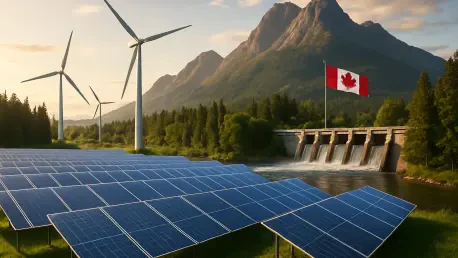Introduction
As global demand for sustainable energy solutions intensifies, Canada stands at a critical juncture, grappling with the dual challenge of meeting rising electricity needs while accelerating the transition to a low-carbon economy, a balancing act particularly evident in the discussions and innovations showcased at the Electricity Transformation Conference (ETC) held from October 6 to 8 at the Enercare Centre in Toronto. Hosted by the Canadian Renewable Energy Association in collaboration with international partners, this event convened thousands of clean energy professionals to tackle pressing issues in solar, wind, and energy storage sectors. The insights shared by over 140 expert speakers and 160 exhibitors highlight a transformative moment for the industry, driven by evolving market dynamics and urgent climate imperatives.
The significance of this gathering lies in its focus on actionable strategies for business leaders navigating complex challenges, from supply chain disruptions to policy inconsistencies. For B2B professionals, understanding these developments is not just about keeping pace with trends but about seizing opportunities to build resilience and drive growth in a competitive landscape. This editorial delves into the key themes and strategic takeaways from the conference, emphasizing how collaboration, policy alignment, and infrastructure readiness are shaping Canada’s clean energy future. By exploring these critical areas, the aim is to equip decision-makers with the knowledge to address risks and capitalize on emerging opportunities.
Navigating the Clean Energy Transition
The clean energy sector in Canada is undergoing a profound shift, with collaboration emerging as a cornerstone for success. A major theme at ETC was the imperative to forge meaningful partnerships, especially with Indigenous communities, to ensure equitable project development. Industry leaders emphasized that integrating local perspectives not only mitigates risks but also enhances community buy-in, as exemplified by the ONEIDA energy storage project, which was completed on time and within budget through a shared vision of risk and reward. For businesses, this approach translates into stronger stakeholder relationships and more sustainable outcomes.
Beyond partnerships, the industry faces significant hurdles from global supply chain disruptions and fluctuating trade policies. Panel discussions highlighted how geopolitical tensions and tariffs, particularly with the U.S. market, create uncertainty that deters investment. Experts noted an oversupply of solar modules due to market rejections elsewhere, underscoring the need for diversified sourcing strategies. B2B leaders must prioritize adaptability, leveraging lessons from past disruptions like the COVID-19 pandemic to build robust supply chains that can withstand external shocks and maintain project timelines.
Another critical area of focus was the urgent need for policy consistency and infrastructure readiness to support clean energy growth. Speakers pointed out that without streamlined permitting processes and investments in logistics like ports and roads, scaling renewable projects remains challenging. Quebec’s ambitious plan to procure over 10 GW of wind and solar by 2050 stands as a benchmark, while other regions lag due to resistance and inadequate frameworks. For decision-makers, advocating for long-term fiscal models spanning 40-50 years and aligning with government initiatives can unlock capital and drive scalable, reliable energy solutions.
Conclusion
Reflecting on the pivotal insights from the Toronto conference, it becomes clear that Canada’s clean energy transformation hinges on strategic collaboration, policy stability, and infrastructure investment. These elements collectively offer a roadmap for businesses to navigate complexities and lead in a sustainable economy. Looking ahead, B2B professionals should focus on fostering inclusive partnerships and advocating for consistent regulatory frameworks to reduce uncertainty. The broader implication is a future where electrification and community-driven innovation pave the way for resilience and global leadership in clean energy.









